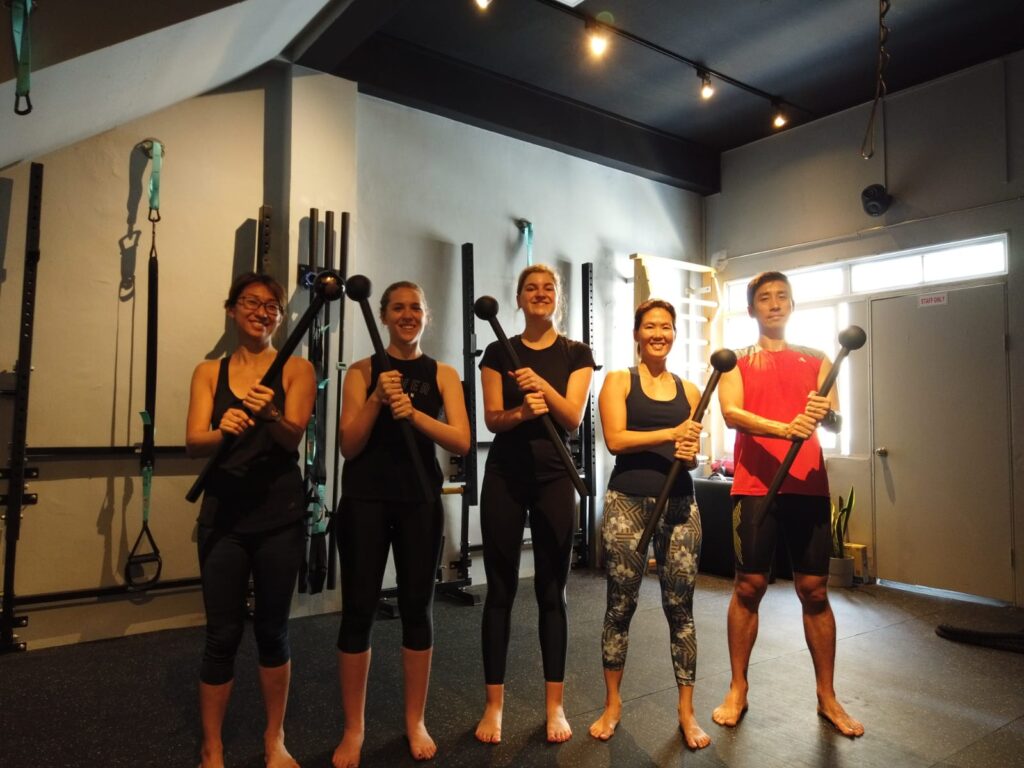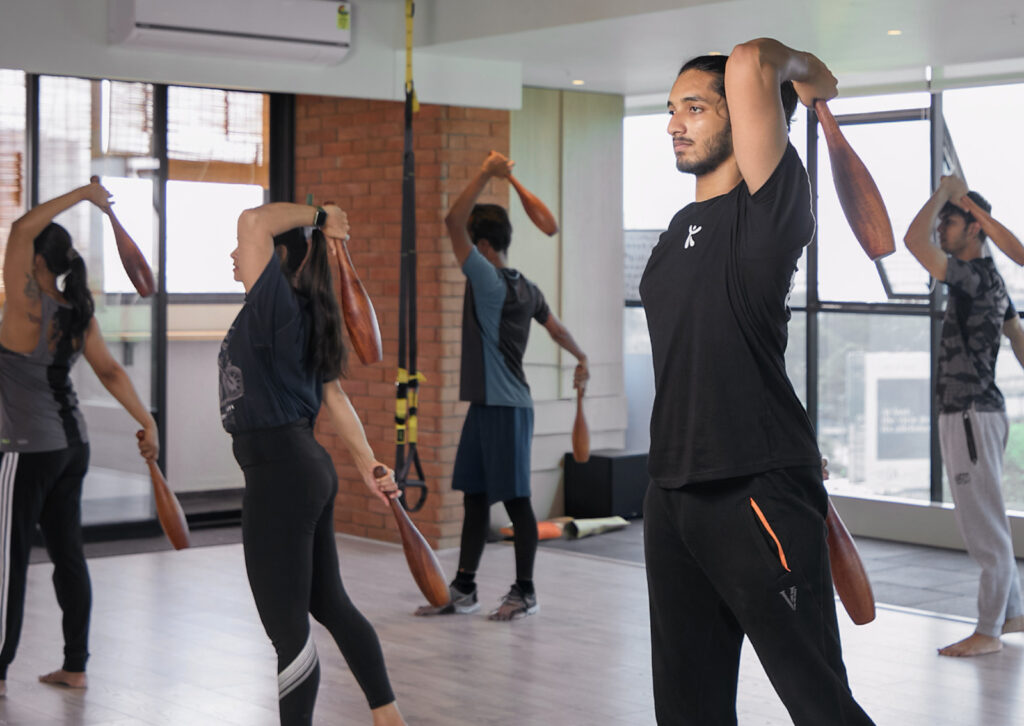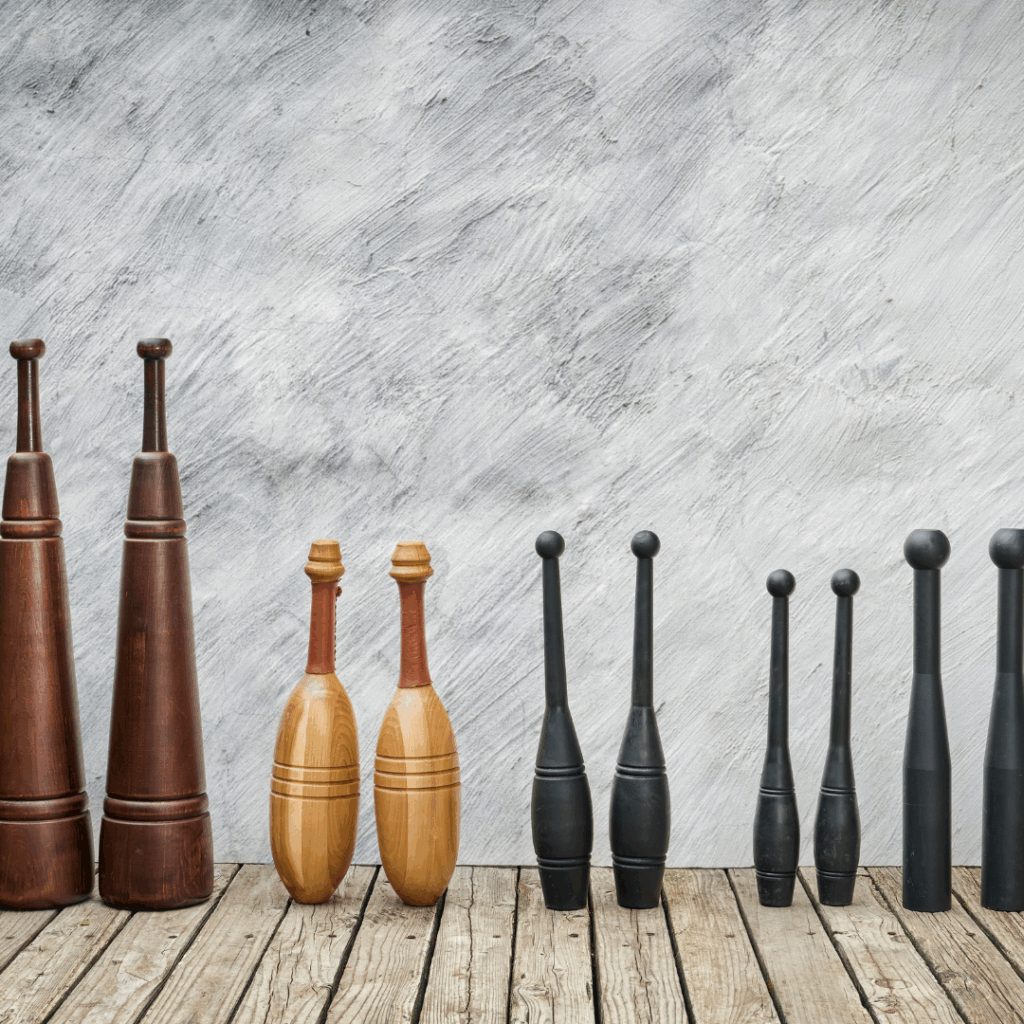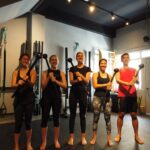
The art & science of Indian club training carries a legacy that bridges centuries & continents. Originating as ancient tools for warriors in Persia & India, Indian clubs were once essential for developing strength, coordination & joint mobility in soldiers preparing for battle. Over time, this tradition travelled westward, captivating the Victorian fitness culture of Europe & inspiring early physical education programmes across the world. From old gymnasiums to modern performance studios, the practice of Indian club swinging continues to evolve, proving its timeless relevance in the fitness industry.
Today, Indian club training is recognised as one of the most important movement arts for any serious coach or personal trainer to master. Its structured, circular motions refine core stability, sharpen coordination, & enhance injury prevention strategies by conditioning the shoulders, elbows & wrists through full ranges of motion. This discipline demands precision & understanding—qualities that separate true professionals from casual enthusiasts.
In Singapore, the resurgence of Indian clubs reflects a global shift back towards functional, multi‑planar movement. Trainers, athletes & fitness enthusiasts alike are discovering the value of these ancient tools not only for improving mobility & posture but also for developing resilience in the nervous system. From boutique studios to high‑performance gyms, the Indian club has become a respected instrument for rehabilitation, performance enhancement & holistic health.
As this discipline gains renewed momentum, the Indian club certification program for fitness professionals offered here ensures you gain access to a better understanding of its origins, methods & applications. By learning the artful mechanics of two clubs, as well as the progressions into light clubs & heavy clubs, you will master a practice that elevates your professional credibility. Whether you work with elite athletes, recreational movers or clients seeking improved joint health, Indian club training equips you with skills that stand the test of time & place you at the forefront of a growing movement in many gym.
Benefits of Indian Clubs Exercises

Let’s take a look at the benefits first. If these outcomes align with what you aim to deliver to clients & group‑class coaching, read on to discover how Indian club training can transform your programmes.
Physical Benefits
- Enhances shoulder, elbow & wrist joint mobility, restoring functional range of motion.
- Develops core stability & postural strength through controlled rotational patterns.
- Improves overall coordination & balance by engaging multiple planes of movement.
- Supports injury prevention by conditioning connective tissues & strengthening stabilising muscles.
- Builds grip endurance & forearm strength for athletes & everyday movers.
- Complements other modalities such as mace training, kettlebells & body‑weight exercises for a complete functional routine.
Mental & Neurological Benefits
- Stimulates the nervous system, enhancing proprioception & body awareness.
- Promotes focus & mindfulness as practitioners master complex swinging sequences.
- Encourages a meditative rhythm that reduces stress & fosters mental clarity.
- Boosts learning & motor‑skill acquisition by challenging cross‑body coordination.
Whether your goal is to elevate client performance, enrich group sessions or simply explore a dynamic practice, the benefits of Indian clubs extend well beyond traditional fitness, offering a holistic upgrade to both body & mind.
Fitness Industry
Within the wider fitness industry, achieving a high level of competence with Indian clubs demands structured learning & precise instruction. To teach effectively—whether guiding absolute beginners, coaching an athlete for peak performance, or supporting a client recovering from pain—you must gain a deeper understanding of how these ancient tools enhance movement, posture & overall health. Proper training ensures you can design programmes that build skill, improve mobility, & deliver measurable progress for every participant. By mastering technique, refining coaching cues & understanding the mechanics of both light clubs & heavy clubs, you position yourself as a trusted professional capable of elevating clients’ performance & safeguarding them from injury.
Deeper Understanding of Indian Clubs vs Steel Clubs
While both tools share a heritage in rotational strength training, their origins & intended uses differ. Indian clubs trace back thousands of years to warriors in Persia & India, where they were swung as ancient tools for conditioning soldiers’ shoulders & enhancing joint mobility. Steel clubs, a more modern innovation developed in the United States during the early 20th century, were inspired by these traditional practices but built heavier to emphasise raw strength & power development.
Basic distinctions help beginners grasp the contrast:
- Weight & Design: Indian clubs are generally lighter, often ranging from 0.5–2 kg, with slender handles that encourage flowing circular patterns. Steel clubs are heavier—commonly 4–20 kg or more—with thicker handles for grip strength & loaded leverage.
- Training Focus: Indian club training prioritises mobility, coordination & endurance through continuous, rhythmic swings. Steel club work leans towards strength, trunk stability & high‑tension rotational drills.
- Applications: Indian clubs suit rehabilitation, warm‑ups, & skill‑based conditioning, while steel clubs excel in building torque, grip, & explosive rotational power.
A well‑designed course offers far more than a simple comparison of Indian clubs & steel clubs—it provides the knowledge & skills to use each tool with precision & purpose. Indian clubs, with their lighter weight & flowing circular movements, excel at improving mobility, coordination & joint health, while steel clubs bring additional load & strength challenges. A comprehensive certification teaches you how to blend these approaches, ensuring you can adapt for every client’s goals.
For professionals working in rehabilitation or high‑level performance, this deeper knowledge translates into better, faster results. You will learn how to design programmes that enhance recovery, build resilience in the nervous system, & accelerate athletic development. Students benefit directly by gaining practical expertise, while those they train—whether in one‑to‑one settings or group classes—experience improved outcomes in strength, balance & injury prevention. This advanced insight empowers trainers the ability to guide both newbies & seasoned athletes, elevating the standard of care & performance across the board.‑designed course offers far more than a simple comparison of Indian clubs & steel clubs—it provides the knowledge & skills to use each tool with precision & purpose. Indian clubs, with their lighter weight & flowing circular movements, excel at improving mobility, coordination & joint health, while steel clubs bring additional load & strength challenges. A comprehensive certification teaches you how to blend these approaches, ensuring you can adapt for every client’s goals.
For professionals working in rehabilitation or high‑level performance, this course translates into better, faster results. You will learn how to design programmes that enhance recovery, build resilience in the nervous system, & accelerate athletic development. Students benefit directly by gaining practical expertise, while those they train—whether in one‑to‑one settings or group classes—experience improved outcomes in strength, balance & preventatives. This advanced insight empowers trainers to guide both beginners & seasoned athletes, elevating the standard of care & performance across the board.
Course Structure- Indian clubs

This comprehensive exercise course certification unfolds in a clear sequence to ensure every participant develops the knowledge, skills, & confidence to master Indian club training. Each stage blends theory with practical application, progressing from fundamentals to advanced techniques so instructors can immediately integrate what they learn into client programmes.
Module 1 – Foundations of Indian Club Training
- History, cultural origins & the evolution of club training.
- Essential safety guidelines, grip variations & stance fundamentals.
- Introduction to light clubs & basic swinging patterns to build coordination & joint mobility.
Module 2 – Technique & Progressions
- Expanding to intermediate swings with two clubs for symmetrical & asymmetrical patterns.
- Breathing, rhythm & tempo control to develop balance & endurance.
- Drills for core stability & shoulder integrity that support both basic ability & athletes.
Module 3 – Applied Coaching & Programming
- Designing sessions for rehabilitation, strength & performance enhancement.
- Adapting techniques for small-group classes or one‑to‑one personal training.
- Understanding when to integrate heavy clubs or pair Indian club work with mace training & other functional tools.
Module 4 – Assessment & Mastery
- Practical evaluation of movement quality, posture & coordination.
- Strategies to monitor client progress & prevent injury.
- Final demonstration to confirm successful completion & readiness to teach confidently.
By the end of this structured journey, every individual personal trainer gain a deeper understanding of Indian club methodology, enabling them to create effective, safe & inspiring programmes for fitness enthusiasts, rehabilitation clients & performance-driven athletes alike.
Register Your Interest
If you are ready to elevate your coaching career, now is the time to secure your place. Register your interest for the upcoming Indian Club Certification in Singapore to receive early updates, priority booking details, & exclusive course information. Spaces are limited to maintain the highest quality of instruction, so taking action today ensures you are first in line when enrolment opens. Whats app +6587693235(movement & sports medicine centre- MSMC) & leave your interest.







